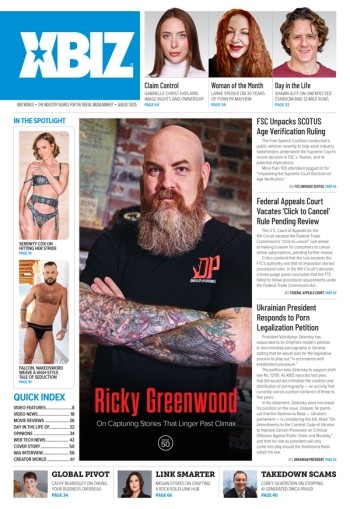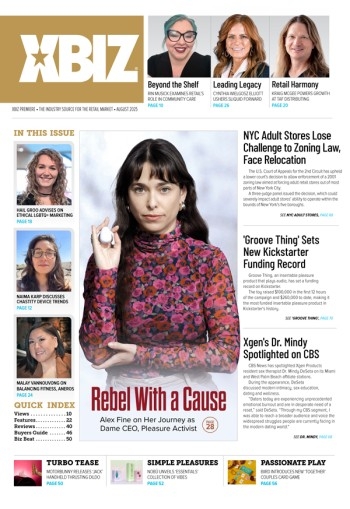Recently I've spent a lot of time thinking about packaging. Around the office, at the stores, in the mall… small store, large store. How are items packaged, what does it do for the product, how does it make me feel.
Before this job I never really thought about it… and now it's all I think about. I find myself taking photos at the grocery store, when I buy makeup and when I find myself attracted to something I would never even consider buying. What attracted me? What did the packaging say to me?
Then a friend and sales rep IM'd me with her own questions about packaging - what worked best for us, which did we prefer etc… I thought about it. What does work best? What do we prefer?
The truth is packaging has always been a huge focus for my company. We used to remove everything from its original package so that our customers could interact with the product and not be swayed (positively or negatively) by how the item was packaged. Because in the end, they are buying the product for the function and not for the package. The package will most likely end up in the trash (recycled if we are lucky!) and we hope the consumer will remember which brand it was and where they bought it.
Aside from the product quality itself, packaging is one of the most important things to consider when looking at a product or a line to add. When a buyer receives samples they, in effect, are having the same experience the consumer will when they look at the product. I'd recommend asking yourself: What does the packaging tell me about the product? Is it true? How does the packaging make me feel? How does it make me feel about the product? What is the focal point on the packaging? Is it the product? If not, why not? Would I buy this? If not, why not?
Then unwrap the product and ask yourself the same questions.
What about the packaging attracts you? What about the product attracts you? What doesn't.
Packaging has evolved leaps and bounds over the past few years and I often ask myself which changes are keepers and where we still need to grow. The consumer is looking for a particular experience so how do we meet the needs of our customers without alienating others. How do we make one segment of society feel "seen" while not excluding others. They are all potential customers, potential revenue.
When I look in a box of samples I am looking at more than just the product itself (look, feel, functionality, quality), I am also looking at how that brand represents itself. How it sells the product. Because these days beauty is way more than skin deep.
Pretty on the Inside
Copyright © 2025 Adnet Media. All Rights Reserved. XBIZ is a trademark of Adnet Media.
Reproduction in whole or in part in any form or medium without express written permission is prohibited.
More Articles
Spicerack Market Offers Indie Brands a Launching Pad
Spicerack Market is an ecommerce platform with the heart of an artisan crafter and the soul of a kinkster. On the website, independent sex toy makers, lingerie seamstresses and kink gear craftspeople can set up a personalized shop to sell their handmade wares, unhindered by censorship or bans on adult products.
Strategies to Bring Pleasure Brands into the Spotlight
Every brand dreams about landing a feature in The New York Times or Men’s Health — and pleasure brands are no exception. After all, mainstream media coverage isn’t just a vanity milestone. It builds trust, attracts new audiences and opens doors to connecting with retailers, partnerships, and investors.
Is Your Retail Business Sextech-Ready?
Sextech isn’t just a niche novelty anymore; it’s the future of sexual wellness. From wearable sex toys that provide biofeedback to interactive sex toys with AI capabilities, sextech has made significant progress over the past few years.
Top Product Launch Tactics to Boost Q4 Sales
According to recent industry insights, over 70% of sexual wellness brands finalize their Q4 lineups between July and early September. This is a high-stakes window for launching new products.
Scroll-Stopping Social Media Strategies to Capture Short Attention Spans
Attention spans are shrinking across all types of media. No matter how innovative a concept may be, if it doesn’t stop the scroll, it’s quickly forgotten. That’s why Netflix has intentionally been simplifying its content, with executives directing writers to create scripts that are less complex and nuanced, and more second-screen-friendly.
The Hidden Cost of Letting Retail Define Pleasure Brands
Not long ago, spotting vibrators and lubricants at a national chain like Target or CVS might have raised eyebrows. Now, it’s almost expected.
WIA Profile: Kelsey Harris
At sister distribution brands Nalpac and Entrenue, one woman is in charge of leading customers in the right direction: Director of Sales Kelsey Harris. Since Michigan-based Nalpac took the reins of Arizona’s Entrenue, Harris has led both sales teams from her home base in Oakland County, Michigan.
Rebranding Sexual Wellness Through a Self-Care Approach
As most of us in the industry already know, sexual wellness remains the black sheep of self-care. Discussions about wellness glorify meditation apps, skincare routines and workout regimens — but mention masturbation or using a sex toy, and most people shy away from the topic.
Why Sex Toy Innovation Isn't What Shoppers Want Right Now
During my first year in the industry, the luxury vibrator on shelves was LELO’s Gigi, priced at $109. It was made with high-quality silicone, boasted an ergonomic design, a travel lock and a warranty. Soon after, Je Joue released its first product, SaSi, which employed “rolling ball” movements to simulate oral sex.
How Adult Retailers Can Enhance Sales With Supplements
The supplement industry is big business. In 2024, Future Market Insights estimated it to be valued at $74.3 billion, and other market research firms anticipate that number will grow to upwards of $170 billion in just 10 years.








